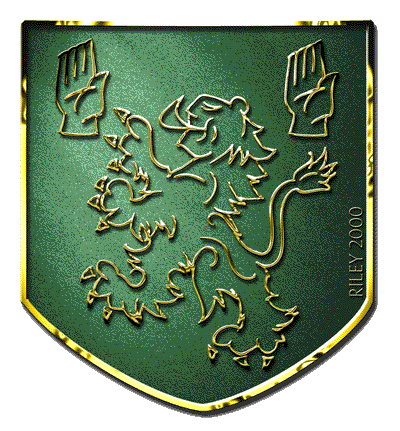Surname | Coat of Arms | Kings | Castles | Gathering | Articles | Notables
Dromagh Castle
By Tadh O’Muimhneachain
Published in Seanchas Duthalla
The Castle of the O’ Keeffes at Dromagh, parts of which can still be seen, is the oldest Castle in Duhallow which has with stood the ravages of time and war. The old Court near Kanturk would have been the largest castle ever built by a native Irish Chieftain, but it was never completed.
The present standing walls of Dromagh Castle which are locally referred to as “The Castle”, were the surrounding walls of the Courtyard. This Courtyard measured forty four yards by Thirty six. The walls are about thirty feet high from the base of the surrounding Moat. They are turreted at the east and west sides and at each of the four corners stands a circular tower. The tower at the North-eastern corner was five storey and about seventy feet high. The remaining were three storeyed and about forty feet high. The internal diameter of each tower is fifteen feet three inches. The walls are five feet five inches inches in thickness.
The gateways are on the east and west sides and are nine feet high by eighteen feet wide. Each gateway had double gates and was of heavy strongly riveted steel plates.
In the centre of the courtyard was the Castle proper. Between the Castle and the surrounding wall was a moat and there was a moat also outside the walls. Both moats could have been about one hundred years old at that time. There was an avenue or roadway leading to the Castle from the south-east that is from the direction of the present Catholic Church and the local tradition has it that fierce fighting took place on this road. However, the Cromwellians drove the O Keeffe men back and charging on horseback through the moat captured the Castle. There is a tradition also that fifteen people were executed after they had surrendered but many escaped through an underground tunnel which had its exit in the farm now owned by William Hartnett.
After 1651 the Castle was owned by the Leader Family and was burned by the local Volunteers during the war of Independence 1920-21.
Micheal J. Bowman Jnr. (2000, PGE156) Offered even more information about the castle in his book titled: Place Names and Antiquities of The Barony of Duhallow
The castle was surrounded by a moat which has now being filled in. In the filling of this moat, two cannon balls were found which are at present in the possession of M. Leader, of Rosanlee, Banteer. Outside the walls of the courtyard is another moat, which has been filled in on the east and north sides. That part of the moat on the south side is 19’ wide and 8 feet deep at present. A well on the east side flooded the moat. A draw-bridge was at the eastern and western gates. Prendergast states that this castle guarded a pass over the Blackwater (Ireland From the Restoration to the Revolution), The Blackwater is, however, about one mile distant from the castle. Local tradition says that a battle was fought at this pass between the forces of O Sullivan Beare and those of O Keeffes, the former being defeated. Unfortunately, the name of this pass over the river has now been lost. A field near the river is called Pairc na Spur (The Field of the Spurs), where spurs and other articles pertaining to cavalry were found many years ago. In the Windle MSS(X11, 1V,p690) it is mentioned that in the south-west tower of the Castle, was a stone bearing an inscription in Irish only 4 letters of which could be deciphered, I, f, g, t. An exhaustive search failed to disclose the whereabouts of this stone. It is said locally that the last battle of the 1641 Rebellion was fought at Dromagh. Breaches were made in the towers and walls, and entrance effected, and the defenders put to the sword. These breaches were afterwards repaired.
Hugh O Keeffe, in the 1642 Rebellion was an adherent of the Duke of Ormond and an opponent of the Papal Nuncio Rinnuccini.

